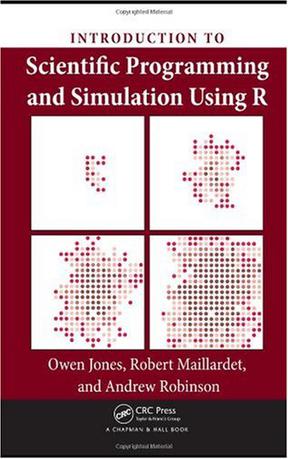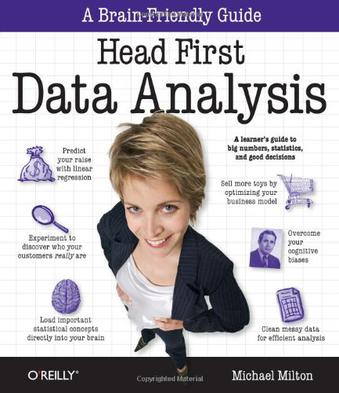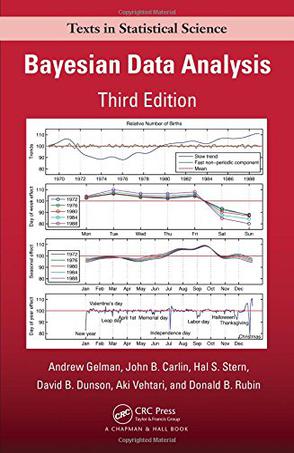-

Introduction to Scientific Programming and Simulation Using R
Known for its versatility, the free programming language R is widely used for statistical computing and graphics, but is also a fully functional programming language well suited to scientific programming. An Introduction to Scientific Programming and Simulation Using R teaches the skills needed to perform scientific programming while also introducing stochastic modelling. Stochastic modelling in particular, and mathematical modelling in general, are intimately linked to scientific programming because the numerical techniques of scientific programming enable the practical application of mathematical models to real-world problems. Following a natural progression that assumes no prior knowledge of programming or probability, the book is organised into four main sections: * Programming In R starts with how to obtain and install R (for Windows, MacOS, and Unix platforms), then tackles basic calculations and program flow, before progressing to function based programming, data structures, graphics, and object-oriented code * A Primer on Numerical Mathematics introduces concepts of numerical accuracy and program efficiency in the context of root-finding, integration, and optimization * A Self-contained Introduction to Probability Theory takes readers as far as the Weak Law of Large Numbers and the Central Limit Theorem, equipping them for point and interval estimation * Simulation teaches how to generate univariate random variables, do Monte-Carlo integration, and variance reduction techniques In the last section, stochastic modelling is introduced using extensive case studies on epidemics, inventory management, and plant dispersal. A tried and tested pedagogic approach is employed throughout, with numerous examples, exercises, and a suite of practice projects. Unlike most guides to R, this volume is not about the application of statistical techniques, but rather shows how to turn algorithms into code. It is for those who want to make tools, not just use them. -

Time Series Analysis
Time Series Analysis With Applications in R, Second Edition, presents an accessible approach to understanding time series models and their applications. Although the emphasis is on time domain ARIMA models and their analysis, the new edition devotes two chapters to the frequency domain and three to time series regression models, models for heteroscedasticity, and threshold models. All of the ideas and methods are illustrated with both real and simulated data sets. A unique feature of this edition is its integration with the R computing environment. The tables and graphical displays are accompanied by the R commands used to produce them. An extensive R package, TSA, which contains many new or revised R functions and all of the data used in the book, accompanies the written text. Script files of R commands for each chapter are available for download. There is also an extensive appendix in the book that leads the reader through the use of R commands and the new R package to carry out the analyses. -

Head First Data Analysis
Today, interpreting data is a critical decision-making factor for businesses and organizations. If your job requires you to manage and analyze all kinds of data, turn to "Head First Data Analysis", where you'll quickly learn how to collect and organize data, sort the distractions from the truth, find meaningful patterns, draw conclusions, predict the future, and present your findings to others. Whether you're a product developer researching the market viability of a new product or service, a marketing manager gauging or predicting the effectiveness of a campaign, a salesperson who needs data to support product presentations, or a lone entrepreneur responsible for all of these data-intensive functions and more, the unique approach in "Head First Data Analysis" is by far the most efficient way to learn what you need to know to convert raw data into a vital business tool. You'll learn how to: determine which data sources to use for collecting information; assess data quality and distinguish signal from noise; build basic data models to illuminate patterns, and assimilate new information into the models; cope with ambiguous information; design experiments to test hypotheses and draw conclusions; use segmentation to organize your data within discrete market groups; visualize data distributions to reveal new relationships and persuade others; predict the future with sampling and probability models; clean your data to make it useful; and, communicate the results of your analysis to your audience. Using the latest research in cognitive science and learning theory to craft a multi-sensory learning experience, "Head First Data Analysis" uses a visually rich format designed for the way your brain works, not a text-heavy approach that puts you to sleep. -

The Bootstrap and Edgeworth Expansion
This monograph addresses two quite different topics, each being able to shed light on the other. Firstly, it lays the foundation for a particular view of the bootstrap. Secondly, it gives an account of Edgeworth expansion. The first two chapters deal with the bootstrap and Edgeworth expansion respectively, while chapters 3 and 4 bring these two themes together, using Edgeworth expansion to explore and develop the properties of the bootstrap. The book is aimed at graduate level for those with some exposure to the methods of theoretical statistics. However, technical details are delayed until the last chapter such that mathematically able readers without knowledge of the rigorous theory of probability will have no trouble understanding most of the book. -

Bayesian Data Analysis, Third Edition
This third edition of a classic textbook presents a comprehensive introduction to Bayesian data analysis. Written for students and researchers alike, the text is written in an easily accessible manner with chapters that contain many exercises as well as detailed worked examples taken from various disciplines. This third edition provides two new chapters on Bayesian nonparametrics and covers computation systems BUGS and R. It also offers enhanced computing advice. The book's website includes solutions to the problems, data sets, software advice, and other ancillary material. -

Introduction to Nonparametric Estimation
This is a concise text developed from lecture notes and ready to be used for a course on the graduate level. The main idea is to introduce the fundamental concepts of the theory while maintaining the exposition suitable for a first approach in the field. Therefore, the results are not always given in the most general form but rather under assumptions that lead to shorter or more elegant proofs. The book has three chapters. Chapter 1 presents basic nonparametric regression and density estimators and analyzes their properties. Chapter 2 is devoted to a detailed treatment of minimax lower bounds. Chapter 3 develops more advanced topics: Pinsker's theorem, oracle inequalities, Stein shrinkage, and sharp minimax adaptivity. This book will be useful for researchers and grad students interested in theoretical aspects of smoothing techniques. Many important and useful results on optimal and adaptive estimation are provided. As one of the leading mathematical statisticians working in nonparametrics, the author is an authority on the subject.